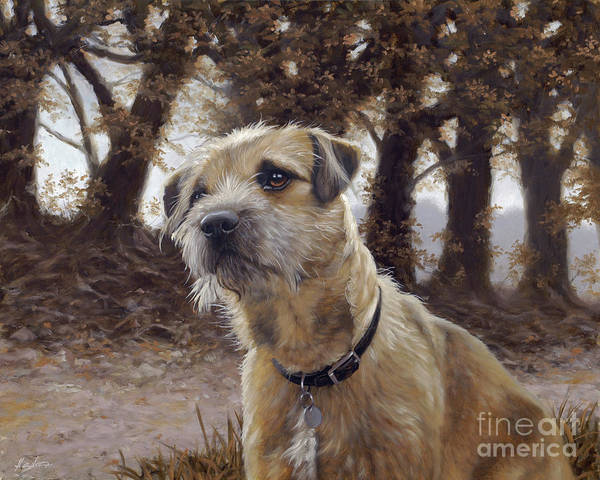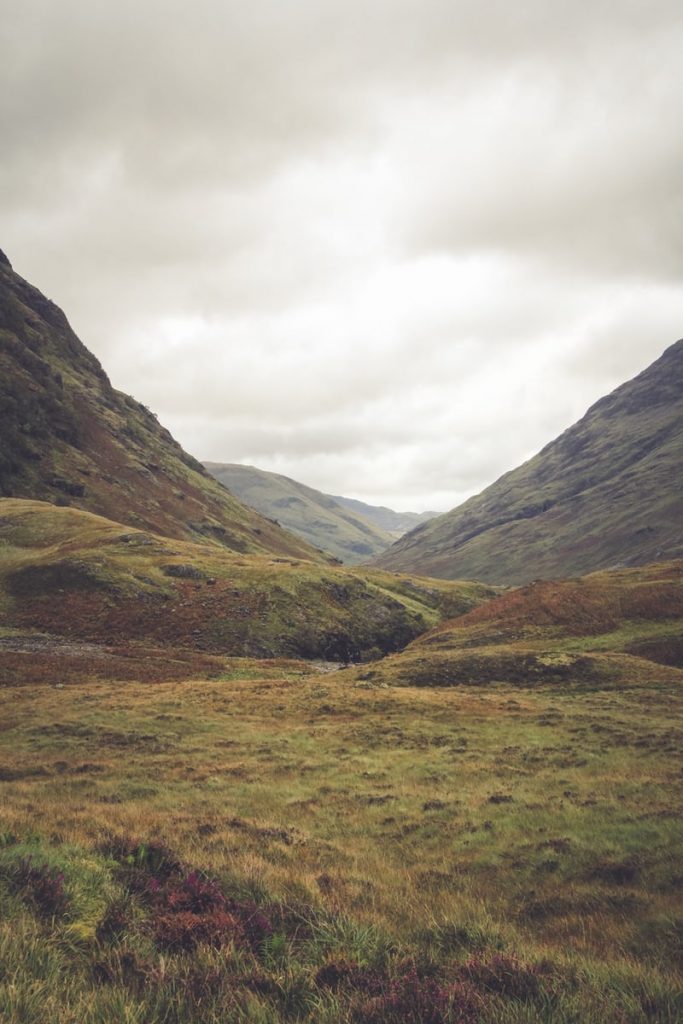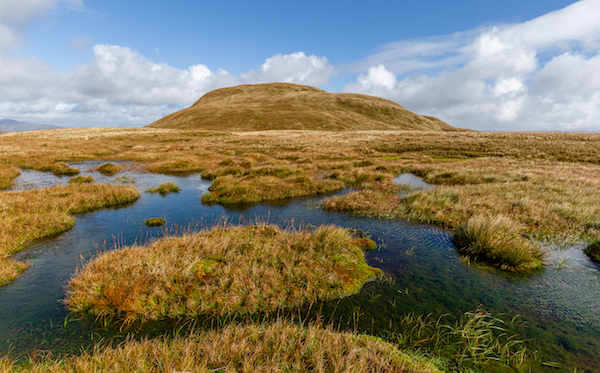
Scotland is a breathtakingly beautiful country, but for a dog, some of it can be an inhospitable environment in which to do the bidding of one’s master or mistress.

The climate tends to be very changeable, and the natives themselves describe weather which is grey and gloomy using the Scottish language word, “dreich.” The country’s terrain was formed by the action of tectonic plates, and thus the most mountainous terrain in all of Great Britain is found in Scotland.

A peat bog below the top of Doune Hill, Luss Hills, Scotland
More than 20% of the country’s land area are peat bogs, wet and mucky wetlands thick with decayed vegetation that can be dangerous to any living thing on foot since they form a crust that ‘floats,’ but as the crust isn’t as dense as water, man or animal can sink into it before reaching buoyant water. Peat bogs in Scotland are often called blanket bogs because they hug the landscape like a blanket but seem to be homogenous from a distance. Some have likened walking through a peat bog to playing a game of Twister, and woe to the soul who missteps. A combination of a lack of oxygen, low temperature and acidic water works to “pickle” the remains of any creature that meets its end in the mud, and there have been many.
The people and dogs who survived generation after generation on either side of the Anglo-Scottish boundary lived in a forsaken territory, and they had to be tough as nails. The border region of Scotland and England was the working environment of a Border Terrier, a breed made hardy by the farmers and sheepherders who struggled to survive in the wild and rugged border country.
Border Terriers typically worked on rock and rough ground, but sometimes they had to negotiate peat bogs, and it wasn’t unusual for a dog to either die in a bog, or as a result of having exerted himself in an environment where a lack of air left them unwell.
And then there were the moss and peat holes. Brian Seymour Vesey-Fitzgerald, an early 20th century naturalist and author of books on dogs born in 1905, claimed that nearly a dozen Border Terriers died in one deep moss hole in Cheviot alone.
It would be a mistake to assume that the owners of these dogs didn’t care for them. While our reading suggests that the dogs were allowed incredible risks to their own well being, and many are the stories of fearless Border Terriers missing part of a lip, an eye, or scarred from wars with badgers or otters, the dogs were valued by their owners. They could go where other terriers couldn’t, were every bit as game the gamest terriers, weren’t quarrelsome with other dogs, and were considered unbeatable at their job.. Owners went to great lengths to rescue them if they became trapped; Vesey-Fitzgerald wrote of the time when several men worked for over four hours in a blizzard and dynamited several tons of rock to save terriers that had become trapped.
Many are of the opinion that the Border Terrier has maintained its original hunting abilities more so than other comparably old breeds, and we use as an example one Border Terrier named “Tanner” who appeared in the movie 5 Flights Up. The dog owned by Susan Friedenberg can be seen in the video clip below, check him out:
We don’t have to guess if Tanner would be up to the task of taking on a rat. His participation in the Ryders Alley Trencher-fed Society, or R.A.T.S., a New York City group founded founded by Richard Reynolds to take on rat infested locations, proves he’s not just a pretty face.
Image:”Border Terrier in the Woods” by John Silver is available for purchase here. Peat Bog images are from Wikicommons or unsplash.com
